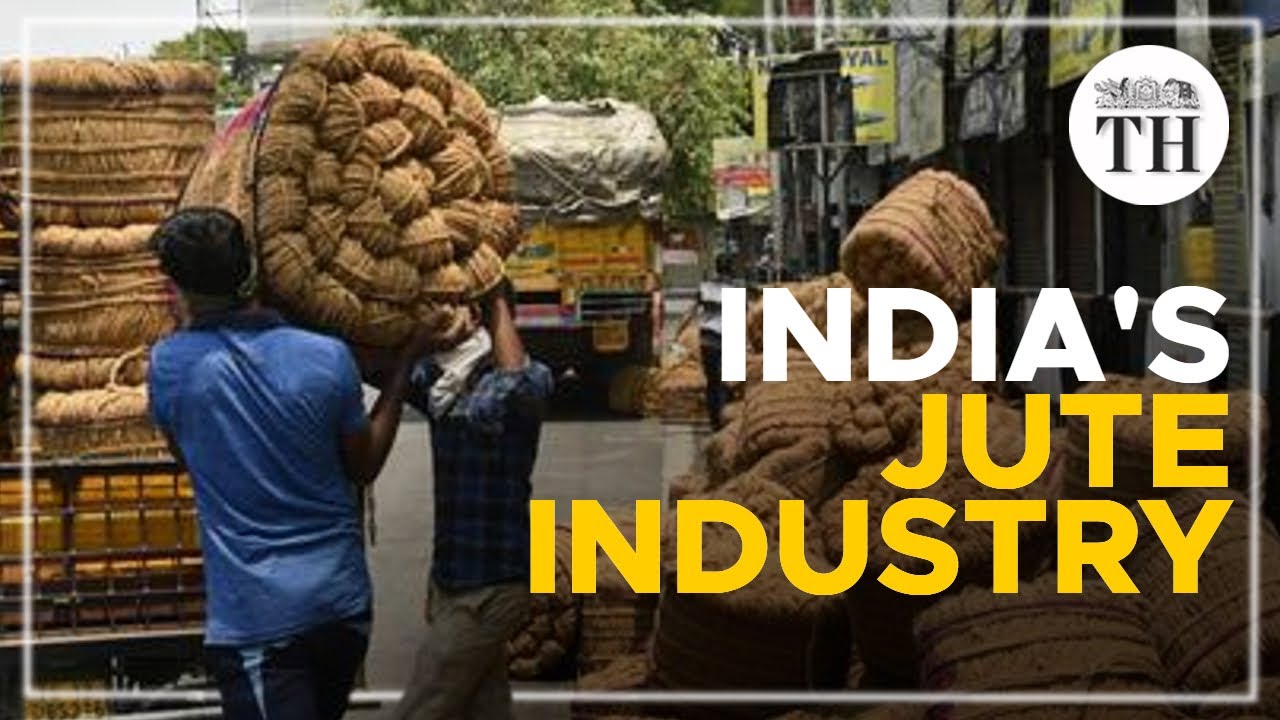Jute fabric is a versatile and eco-friendly textile that is taking the fashion and home décor industries by storm. Known for its durability, strength, and natural appeal, jute fabric offers a unique combination of style and sustainability. With its rustic charm, natural elegance, and versatility, jute fabric is making its mark as a go-to material for fashion designers, interior decorators, and eco-conscious consumers alike.
One of the most captivating aspects of jute fabric is its rustic charm. Its coarse texture and earthy tones add a touch of warmth and authenticity to any design or outfit. Whether used in upholstery, rugs, bags, or clothing, jute fabric exudes a sense of understated elegance that is hard to replicate. Its natural fibers create a visually appealing surface that is breathable, skin-friendly, and comfortable to wear.
Moreover, jute fabric is incredibly versatile. It can be easily blended with other materials to enhance its properties or create unique textures. From blending it with cotton for a softer feel to combining it with silk for a luxurious touch, the possibilities are endless. Jute fabric is also highly receptive to dyes and prints, allowing designers to experiment with various colors and patterns.
Aside from its aesthetic appeal, jute fabric is a sustainable choice. As a natural fiber, it is renewable, biodegradable, and compostable. Jute plants require minimal water and do not depend on synthetic fertilizers or pesticides, making them an environmentally friendly alternative to conventional textiles. By choosing jute fabric, you can contribute to a greener future while enjoying its timeless beauty and durability.
In conclusion, jute fabric offers a harmonious blend of rustic charm, natural elegance, and versatility. Its unique qualities make it an excellent choice for those seeking sustainable fashion and home décor options. Discover the allure of jute fabric and embrace its eco-friendly allure in your next design project or wardrobe update.

The Versatility and Sustainability of Jute Fabric
When it comes to sustainable and eco-friendly fabrics, jute fabric is a clear winner. Made from the fibers of the jute plant, this versatile material has been used for centuries in various applications. From fashion to home decor, jute fabric offers a myriad of benefits that make it a popular choice among conscious consumers. Let's explore why jute fabric is gaining popularity and why it should be on your radar.
1. History and Production
Jute, also known as the “golden fiber,” has a rich history that dates back to ancient times. It is believed to have originated in the Indian subcontinent and has since spread to other parts of the world. The jute plant, scientifically known as Corchorus olitorius and Corchorus capsularis, is primarily grown in countries like India, Bangladesh, China, and Thailand.
The production process of jute fabric involves several steps. Initially, the jute plants are harvested and left to rot in water, a process called retting. This allows the fibers to separate easily from the stalks. The fibers are then extracted from the stalks by hand or machine. Afterward, the fibers are spun into threads and woven into fabrics.
2. Properties and Benefits
Jute fabric boasts several properties and benefits that set it apart from other materials. Firstly, it is incredibly durable, making it suitable for various applications. Whether it's for bags, rugs, or upholstery, jute fabric can withstand heavy use and last for an extended period.
Additionally, jute fabric is biodegradable, making it an excellent choice for those concerned about the environment. Unlike synthetic fabrics, jute fabric decomposes naturally without releasing harmful toxins into the environment. This characteristic makes it an ideal choice for eco-conscious individuals.
Furthermore, jute fabric is breathable and has excellent insulating properties. This means that it keeps you cool in hot weather and warm in colder climates. Its breathability also makes it suitable for clothing, as it allows air to circulate and prevents sweat from accumulating.
3. Applications in Fashion
Jute fabric has gained significant popularity in the fashion industry due to its unique texture and eco-friendly nature. Designers are increasingly incorporating jute fabric into their collections to create sustainable and stylish clothing options. From dresses to accessories, jute fabric adds a touch of rustic charm to any outfit.
Moreover, jute fabric is highly versatile and can be blended with other materials such as cotton or silk to enhance its properties. This blend creates a soft and comfortable fabric that is both fashionable and sustainable. Many ethical fashion brands are now using jute fabric to produce eco-friendly and ethical clothing.
4. Home Decor and Interior Design
Jute fabric is not only limited to fashion; it has also made its way into the world of home decor and interior design. Its natural and earthy tones add warmth and texture to any space. Whether it's in the form of rugs, curtains, or upholstery, jute fabric brings a touch of nature indoors.
Furthermore, jute fabric is an excellent choice for those looking to create a sustainable and eco-friendly home. Its durability ensures that your furniture and decor items last longer, reducing the need for frequent replacements. Additionally, jute fabric is hypoallergenic, making it a suitable choice for individuals with allergies or sensitivities.
5. The Future of Jute Fabric
As the demand for sustainable and eco-friendly materials continues to grow, the future of jute fabric looks promising. With its impressive properties and versatility, jute fabric is likely to become more prevalent in various industries.
Efforts are being made to explore innovative ways to incorporate jute fabric into new applications. This includes research on developing jute-based composites for construction and automotive industries, as well as exploring its potential in the field of medicine.
In conclusion, jute fabric is a versatile and sustainable material that offers numerous benefits. Its rich history, durability, and eco-friendly properties make it an excellent choice for fashion, home decor, and various other applications. As more people become conscious of the environmental impact of their choices, jute fabric is likely to continue gaining popularity and becoming a staple in the world of sustainable textiles.
“India's Thriving Jute Industry: A Golden Thread of Sustainability”
List about Jute Fabric:
Jute Fabric
| Property | Description |
|---|---|
| Composition | Jute fabric is made from the fibers of the jute plant, scientifically known as Corchorus olitorius. It is a natural, biodegradable, and sustainable material. |
| Strength | Jute fabric possesses remarkable tensile strength, making it suitable for heavy-duty applications. Its fibers are known to be 100% bio-degradable and have the ability to withstand high pressure. |
| Moisture Absorption | Jute fabric excels in moisture absorption, making it an ideal choice for products such as sacks, bags, and packaging materials. Its ability to retain moisture also allows for excellent breathability. |
| Environmental Impact | Jute fabric is highly regarded for its minimal environmental impact. The jute plant requires less water and fewer pesticides during cultivation compared to other fiber crops. Additionally, jute cultivation aids in soil fertility and reduces greenhouse gas emissions. |
| Versatility | Jute fabric can be easily blended with other materials, such as cotton or synthetic fibers, to enhance its properties. This allows for a wide range of applications, including textiles, home decor, upholstery, and even as a reinforcement material in construction. |
| Appearance | Jute fabric showcases a unique and earthy aesthetic. Its natural golden color and coarse texture give it a distinct charm, making it a popular choice for eco-friendly and rustic-themed products. |
As an expert in the field, I highly recommend considering jute fabric for your textile and material needs. With its exceptional strength, moisture absorption capabilities, and minimal environmental impact, it stands out as a sustainable and versatile choice. Whether you are in search of a durable packaging solution or looking to add a touch of natural elegance to your home decor, jute fabric is sure to meet your requirements. Embrace the beauty and functionality of this remarkable material and contribute to a greener future.

